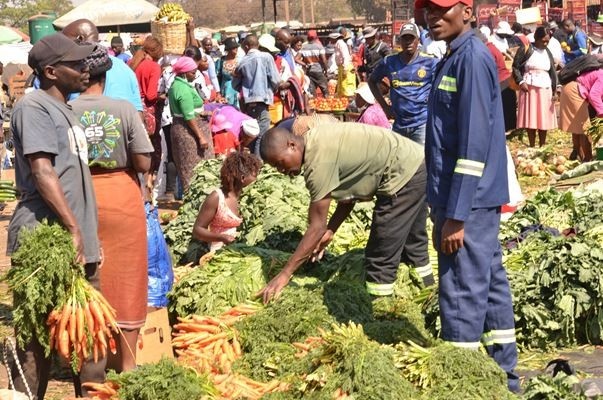2. Uncertainties about market availability and trading space – In almost every African country, roadside markets and urban street markets are common features because farmers are often not sure where to sell and the size of trading space. This is because policymakers have not invested in systems for generating data to inform farmers on whether to take their fresh produce to one city or the other. The majority of farmers discover the market on arrival in cities with their commodities.
3. Uncertainties about demand patterns and competition levels–Most farmers are not sure how much to produce, for how many buyers and consumers. Consequently, gluts and shortages tend to alternate because farmers are not sure who else is bringing commodities to the same market. This is also connected to uncertainties around activities and levels of competition in different markets. For instance, it is difficult for farmers to know the volume of activities in one market to guide their delivery decisions and patterns to other markets.
4. Uncertainty around market-related costs – Across Africa, mass food markets also known as territorial markets, are under the jurisdiction of local authorities or municipalities who tend to set market fees without consulting farmers. For instance, the extent to which council rates affect profit margins for farmers and the level at which farmers trade in designated markets is usually unknown.
5. Uncertainties around support services in the market – Farmers bringing commodities from distant farming areas to urban markets are often uncertain about where they will sleep, where they get food and ablution facilities. That is why relationships between farmers and market traders are very important because farmers will know where to take their commodities and where they will be accommodated.
6. Uncertainties around currency and payment mode – These uncertainties are unique to Zimbabwe where the multi-currency system comprising United States dollars, Zimbabwe dollars, South African Rands, mobile money and other currencies are used. When using multi-currencies, farmers find it difficult to project possible revenue as well as sources and prices of inputs. For instance, farmers taking commodities to formal markets like supermarkets or mass markets are also not certain about the currency they will be paid and the bank rate. Also uncertain is a mode. Those who decide to sell maize and wheat to the Grain Marketing Board (GMB) are paid partly in USD and partly in Zimbabwe dollars, with the amount of payment determined by the exchange rate on the day of commodity supply.
7. Uncertainty around food safety
Globally, food safety is a concern in traditional food markets, a setting where millions of people access food daily. While these markets supply a variety of food commodities and provide vendors with livelihoods, it is difficult to guarantee safe food, as markets are often without regulation and can lack the necessary infrastructure to support best food safety practices. As a result, there has been a growing interest in localizing food safety interventions to improve food safety in traditional food markets.
Billions of consumers in the world are unsure whether the food they consume is safe or unsafe. Unsafe food causes serious health problems, threatens and takes lives, and undermines food security and nutrition. According to the World Health Organization’s (WHO) Foodborne Disease Burden Epidemiology Reference Group (FERG) Report, each year 420,000 people die, and 1 in 10 falls ill from foodborne disease (FBD), which is a similar impact to that of malaria and HIV/AIDS. Low-and middle-income countries are particularly vulnerable to illness and death due to foodborne illnesses. At 125,000 deaths annually, children also face an inequitable burden of FBD. In addition, practices that lead to food becoming unsafe also cause and accelerate food loss, reducing the availability of food[1].
[1] https://agrilinks.org/post/why-food-safety-standards-matter-insights-eatsafe
